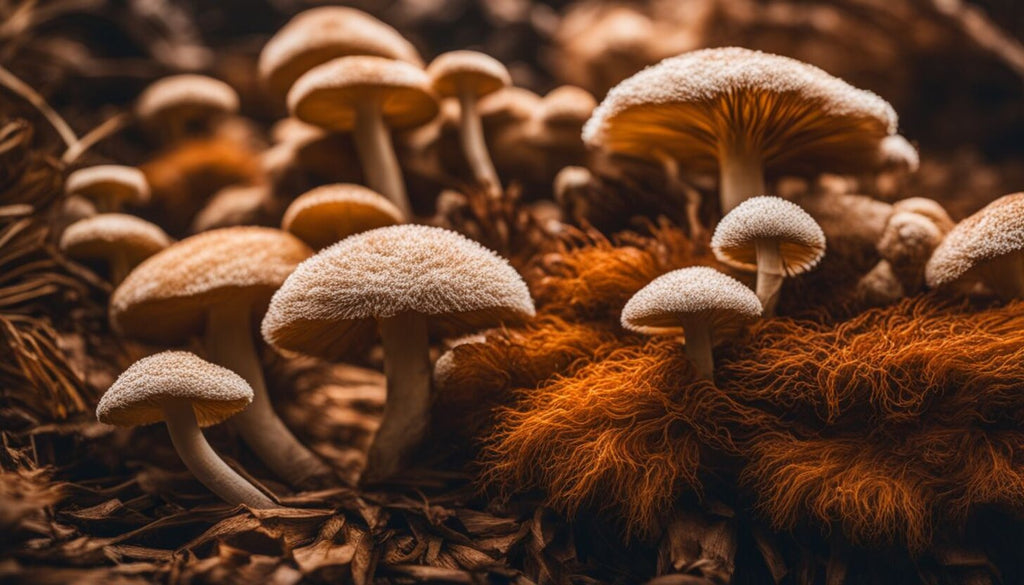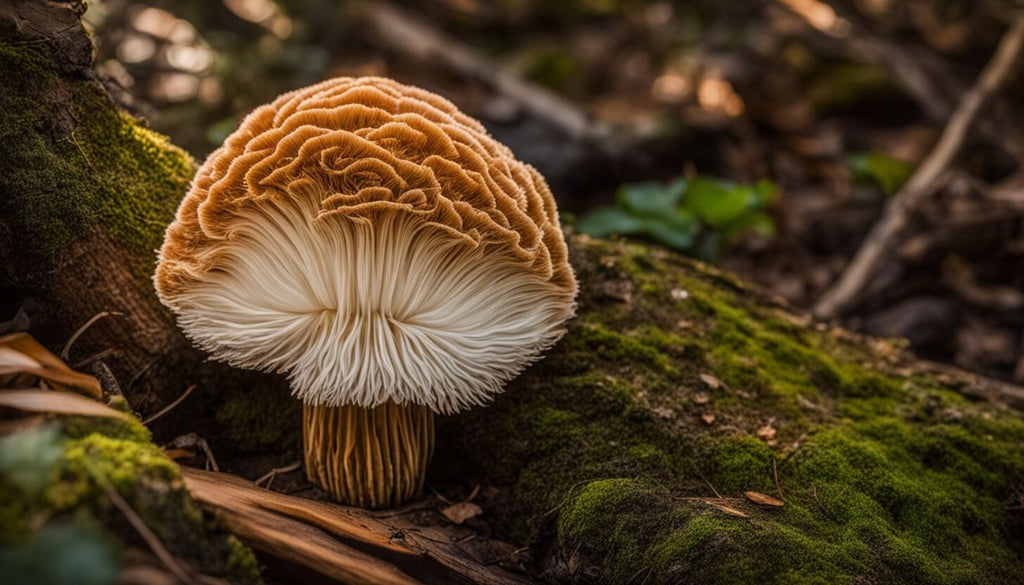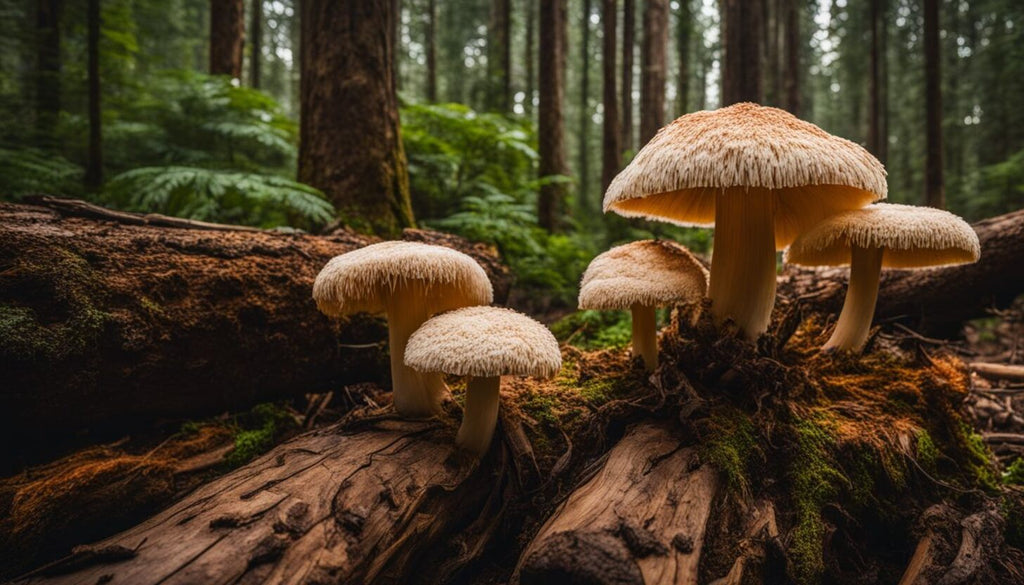How to Grow Lion's Mane Mushrooms at Home
Learning how to grow Lion's Mane mushrooms at home can be a rewarding experience for both novice and experienced gardeners. This comprehensive guide will walk you through the essential steps of growing Lions Mane mushrooms, from selecting the right substrates to understanding the optimal conditions for growth.
Whether you're looking to add a nutritious and medicinal mushroom to your diet or simply interested in the fascinating world of mycology, this article will provide you with all the information you need to successfully grow Lion's Mane mushrooms.
With a focus on practical tips and expert advice, we'll help you navigate the process of growing Lion's Mane mushrooms, ensuring a bountiful harvest of this unique and beneficial fungi.
Understanding Lion's Mane Mushrooms
The Lion's Mane mushroom, also known as Hericium erinaceus, are unique fungi that grow on hardwood. They have a distinctive look, resembling a white pom-pom or coral. These cultivated mushrooms need specific conditions to thrive.
To grow them well, the environment must be just right. They prefer temperatures between 60°F and 85°F (15°C to 30°C). Make sure they have plenty of fresh air, too. Without enough airflow, they can't get their famous shape.
The growth cycle is fascinating. First comes mycelial growth which takes about three weeks to completely cover the substrate with white fibers. Then fruiting bodies start forming, which will become the full mushroom you see.
These mushrooms aren't just for looks; they pack health benefits too! People say they help with cognitive abilities and support the immune system thanks to anti-inflammatory properties.
Choosing Your Growing Method

When it comes to growing Lion's Mane mushrooms at home, you have a few different methods to choose from. Whether you opt for a convenient grow kit, the grain spawn and hardwood pellet method, or log cultivation, each approach has its own unique benefits and considerations.
Grow Kits
Grow kits make starting out with lions mane mushrooms easy. They include everything you need: a bag of colonized substrate and instructions. Just open the kit, mist it with water, and place it in a spot with the right light and temperature.
With mushroom grow kits, you skip steps like sterilizing substrates or inoculating grain spawn. Mist your kit daily to keep humidity high. Soon, you'll see the white, brain-like mushrooms start to form. Watch them grow each day until they're ready to harvest!
Grain Spawn and Hardwood Pellets
Grain spawn is the seed that starts your lion's mane mushroom. Mix it with hardwood pellets to create a rich substrate. Hardwood sawdust works well, especially when you add bran for extra nutrients. The mixture is called master's mix, great for mushroom growth.
First, soak and sterilize your pellets and bran to kill any unwanted germs. Then mix in the grain spawn evenly. This method sets up a strong foundation for healthy mycelium to spread through the substrate.
Log Cultivation
Log cultivation is a natural way to grow lions mane mushrooms. First, find fallen hardwood logs from certain tree types like beech or oak. These woods make a sturdy base for the mushrooms to flourish in.
After getting your logs, you'll want spawn plugs which are small wooden dowels covered with mushroom mycelium.
You then drill holes into the log and tap these spawn plugs into place with a hammer. Seal each hole with cheese wax to protect against unwanted organisms and help hold moisture in.
The next step is incubation, where you leave the log in a shady spot outdoors so that the mycelium can spread through the wood fibers.
This process takes a few months but requires little upkeep—just keep an eye on moisture levels, especially during dry periods. When ready, move your logs to initiate fruiting; this triggers the growth of actual lions mane mushroom clusters!
How to Grow Lion's Mane with Grain Spawn and Hardwood Pellets

Ready to start growing your own lion's mane mushrooms? Read on to learn more about the process!
Gathering Supplies
To grow Lion's Mane mushroom, you will need the following supplies:
- Hardwood sawdust: Use hardwood sawdust amended with bran as the substrate for growing Lion’s Mane.
- Grain spawn: Colonize jars of grain with Lions Mane mycelium to use as an inoculant for your substrate.
- Pressure cooker: Sterilize the substrate in a pressure cooker to ensure it is free from contaminants.
- Incubation chamber: Have a designated area or chamber to incubate and allow the mycelium to colonize the substrate.
- Inoculation tools: Prepare gardening tools such as scalpels or flame-sterilized metal rods for inoculating the substrate with grain spawn.
- Hygrometer: Use a hygrometer to monitor and maintain optimal humidity levels during incubation and fruiting stages.
- Disinfectant: Keep disinfectants like isopropyl alcohol on hand to maintain sterile conditions during the process.
- Personal protective equipment: Wear gloves, masks, and hairnets to ensure good personal hygiene and prevent contamination.
Preparing Substrate
After gathering supplies, the next step is to prepare the substrate for growing Lion’s Mane mushrooms. Here's how to do it:
- Combine hardwood pellets, bran, and water in a large container.
- Soak the mixture until the pellets break down and the water is absorbed.
- Mix the substrate thoroughly to ensure an even distribution of moisture and nutrients.
- Achieve the right moisture content by adding or draining water as needed.
- The Master’s Mix, a blend of 50% hardwood sawdust and soy hulls, has been proven effective for Lion’s Mane cultivation.
Inoculating Substrate
To inoculate the substrate, follow these steps:
- Gather your supplies: grain spawn, hardwood pellets, a large mixing bowl, and water.
- Hydrate the hardwood pellets by adding hot water to the mixing bowl until fully soaked.
- Drain excess water from the pellets and allow them to cool until they reach room temperature.
- Mix the hydrated hardwood pellets with the grain spawn in a clean environment to avoid contamination.
- Thoroughly combine the grain spawn and hardwood pellets until evenly distributed.
- Transfer the inoculated substrate into your chosen growing container and level it out for even colonization.
- Label the container with the date of inoculation and store it in a warm, dark place for incubation.
Incubating Inoculated Substrate
After inoculating the substrate, it's time to move on to the next crucial step in growing mushrooms at home. Here's how to incubate the inoculated substrate successfully:
- Maintain Ideal Temperature and Humidity: Keep the inoculated substrate in a dark, warm, and humid environment, with temperatures consistently around 70-75°F and humidity levels at 90-95%.
- Check for Contamination: Regularly inspect the substrate for any signs of contamination, such as unusual odors, colors, or mold growth. Remove any contaminated areas immediately.
- Monitor Growth Progress: Keep a close eye on the substrate for the development of mycelium. It may take several weeks for significant growth to occur.
- Ensure Proper Airflow: While maintaining high humidity is essential, ensure that there is adequate airflow to prevent stagnant air that could lead to mold growth.
- Be Patient: Incubation can take patience; don't disturb or move the inoculated substrate unnecessarily during this crucial stage of growth.
Fruiting Your Lion's Mane
After successfully incubating the inoculated substrate, it's time to move on to fruiting your Lion's Mane mushroom. This is a critical stage that requires specific conditions for optimal results.
- Maintain Humidity: Ensure the grown environment maintains a relative humidity of around 65%, which is ideal for encouraging fruiting.
- Ventilation: Proper air circulation is crucial for the development of healthy fruiting bodies. Use fans or natural airflow to facilitate this.
- Light Exposure: Induce fruiting by exposing the grown area to indirect light, mimicking natural forest conditions where Lions Mane thrives.
- Patience: Be patient as you wait for the fruits to develop. Avoid disturbing the growing chamber during this period.
- Harvesting: Once the fruits have fully developed and are fluffy, carefully harvest them using a sharp knife at the base of the mushroom.
- Leave in Chamber: After harvesting, leave any remaining small clusters in the chamber as they may develop into subsequent flushes within a short timeframe.
- Enjoy: Now enjoy your freshly harvested Lion's Mane mushrooms in various culinary creations or reap their numerous health benefits.
Growing Lion's Mane on Logs

Read on to learn more about this method of growing Lion's Mane mushrooms at home!
Purchasing Spawn Plugs
To grow Lion's Mane mushrooms on logs, follow these steps for purchasing spawn plugs:
- Obtain high-quality Lion’s Mane mycelium in the form of spawn plugs from a reputable supplier.
- Ensure the spawn plugs are well-packaged and free from contamination, as this is crucial for successful colonization.
- Verify the spawn rate provided by the supplier to ensure you have an adequate quantity for your log cultivation.
- Consider the medicinal properties of Lion’s Mane mycelium while choosing the spawn plugs to maximize health benefits.
- Check for any additional instructions or guidelines provided by the supplier for handling and storing the spawn plugs.
- Keep the purchased spawn plugs in a cool, dark place until you are ready to use them in inoculating your logs.
Inoculating Your Logs
After purchasing spawn plugs for your Lion's Mane mushrooms, the next step is to inoculate your logs. This involves the following steps:
- Selecting Suitable Logs: Choose healthy hardwood logs that are freshly cut and have a diameter of 4-6 inches.
- Drilling Holes: Space holes about every 6 inches along the length of the log using a 5/16-inch drill bit, ensuring they are at least 1 inch deep.
- Inserting Spawn Plugs: Gently tap the spawn plugs into the holes using a hammer until they are flush with the surface of the log.
- Sealing Holes: Apply wax or cheese wax to seal each hole, preventing contaminants from entering and helping to maintain moisture levels.
- Incubation Period: Place the inoculated logs in a shaded and moist area, preferably outdoors, and wait for mycelium colonization to occur within the logs.
Incubating Your Logs
- Drill holes in the log using a 5/16-inch drill bit.
- Space the holes about 6 inches apart in a diamond pattern, with rows 2 inches apart.
- Insert the spawn plugs into the holes and seal them with cheese wax to prevent contamination.
- Label each log with the inoculation date and keep them in a shady area with good air circulation.
- Maintain moisture by watering or covering the logs with damp burlap to create a humid environment.
Initiating Fruiting
To initiate fruiting for Lion's Mane mushrooms:
- Maintain a consistent temperature of around 60-70°F, which is optimal for fruiting.
- Keep humidity levels high, ideally between 85-95%, to simulate forest-like conditions.
- Provide indirect light by placing the growing container in a well-lit room without direct sunlight.
- Mist the substrate lightly with clean water to maintain moisture levels and promote fruiting.
- Avoid disturbance to the growing environment as Lion's Mane mycelium can be sensitive to changes.
- Be patient and monitor the growth closely, as fruiting typically begins within 7-14 days after initiating the process.
Harvesting Techniques

Harvest lion's mane mushrooms when they are firm to the touch and their spines begin to elongate. Use a sterilized sharp knife to cut them close to the substrate, ensuring minimal damage.
After harvesting, break down the substrate and incorporate it into your compost pile or garden bed for nutrient-rich soil.
After harvesting techniques, learn about storing and cooking lion's mane mushrooms at home for delectable culinary experiences that make the most of your harvest.
Storing and Cooking Lion's Mane Mushrooms
Properly store your lion's mane mushrooms using different methods, and learn some delicious recipes to cook with them. Ready to take your lion's mane mushroom cultivation to the next level? Keep reading!
Storage Methods
Store Lion’s Mane mushrooms fresh in a paper bag with good air circulation in the fridge. For longer storage, dehydrate them by slicing them finely and sealing them in a jar until ready to eat.
This method preserves their flavor and nutrients.
Dried Lion’s Mane mushrooms can be stored for a longer duration while retaining their nutritional value. They need to be sealed properly after dehydration to maintain freshness.
Recipe Ideas
When it comes to cooking with lion's mane mushrooms, their unique texture and flavor make them a versatile ingredient. These mushrooms can be used in various recipes such as stir-fries and soups or even as a meat substitute in vegetarian dishes due to their meat-like texture and mild, slightly sweet flavor.
Incorporating dried lion’s mane mushrooms into recipes adds an earthy depth of flavor, making them suitable for enhancing the taste of sauces, stews, or risottos. Their versatility also extends to being an excellent addition to omelets or pasta dishes.
Lion's mane mushrooms can also be prepared through grilling or roasting methods, which further enhance their natural umami flavors while adding a delightful smokiness.
Additionally, they can also be sautéed until golden brown and crispy for a delightful texture contrast in salads or wraps – providing a unique culinary experience packed with health benefits.
Health Benefits of Lion's Mane Mushrooms

Lion's Mane mushrooms contain compounds like beta-glucans, hericenones, and erinacines, which are associated with reducing inflammation in the body. Studies have shown that these mushrooms can promote nerve growth factor production in the brain, potentially enhancing cognitive function and aiding in neurological conditions.
Additionally, Lion's Mane mushrooms may offer immune system support by increasing the activity of white blood cells and improving overall immunity. The anti-inflammatory properties of Lion's Mane make it valuable for managing various health issues, such as skin aging and chronic diseases like diabetes and cancer.
The medicinal benefits of Lion's Mane mushrooms extend to their potential to combat dementia-related symptoms due to their ability to protect against neuronal damage and promote nerve regeneration.
Furthermore, research suggests that consuming Lion's Mane mushrooms regularly could contribute to improved gut health by supporting beneficial gut bacteria while inhibiting harmful pathogens.
Conclusion
In summary, growing Lion's Mane mushrooms at home is a rewarding process that offers various health benefits and culinary opportunities.
By following the outlined methods and tips, you can successfully cultivate these mushrooms in your own space.
FAQs
What do I need to grow Lion's Mane mushrooms at home?
To grow Lion's Mane mushrooms at home, you'll need a mushroom growing kit or materials like wood chips, sterilized wheat bran or oat bran for substrate, and a humidifier to maintain the right environment.
Can you tell me about keeping my growing area clean for my mushrooms?
Cleanliness is crucial in growing mushrooms. Use sterilization methods such as using a pressure canner before starting to ensure sterility and prevent molds.
Are Lion’s Mane mushrooms the same as oyster mushrooms?
No, while they're both types of medicinal mushrooms that you can grow at home, Lion’s Mane and oyster mushrooms are different species with unique shapes and health benefits.
How does vermicomposting help in growing Lion's Mane mushrooms?
Vermicomposting can provide rich nutrients for your mushroom log, which helps your Lion’s Mane mushrooms grow better by improving the soil quality.
Is it hard to set up the right conditions to grow medicinal mushrooms like Lion\'s mane?
Not really! With a mushroom growing kit, it becomes easier since it includes instructions on how to create ideal conditions for your medicinal mushroom growth. Remember to keep humidity levels high with tools like humidifiers.








